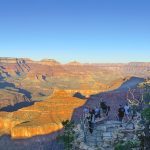
Diné College program offers Native archery
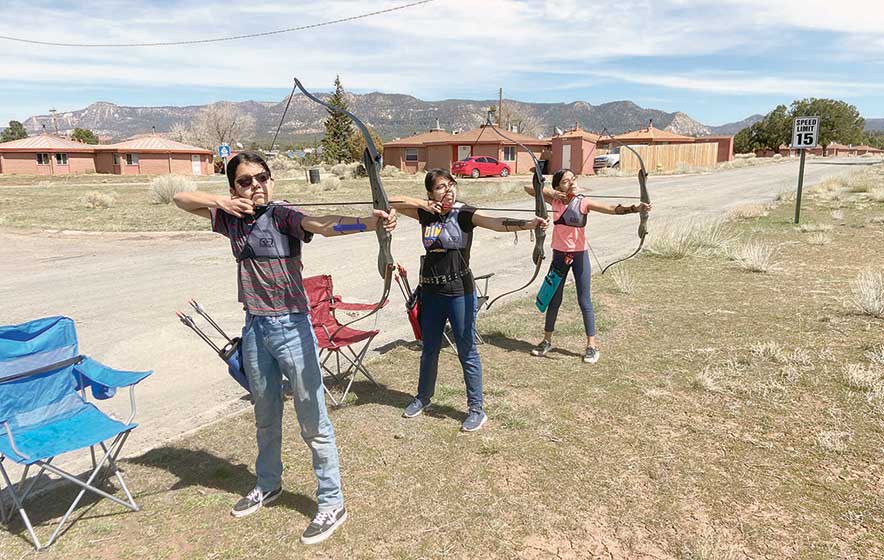
Courtesy photo
The Twin Warriors Archery Club members include, left to right, Bradley Redhouse, Haylei Redhouse, and Octavia Redhouse.
TSAILE, Ariz.
In the past, Diné College (formerly known as Navajo Community College) offered archery as a one-credit physical education & health course that could be taken as part of the general education degree checklist.
The class provided students with technical archery skills, a fundamental understanding of bow construction, and general history of the bow and arrow, according to a college news release.
Demand for this elective course resulted in full rosters and assisted in scouting talent for the Diné College archery team. Although PEH courses, including archery, were officially removed from the college catalog in 2020, the emergence of the newly created Native American studies minor program in 2021 offers an opportunity for archery to be once again taught to students.
This summer, Gregory Redhouse will offer a special topics course titled Native American Archery.
Redhouse will teach this three-credit course over five weeks. Summer session one takes place from May 23 to June 24, and summer session two is from June 27 to July 29. This hybrid course (online and in-person) will be Monday through Thursday at the Pinon Pit on the Tsaile campus from 1 p.m.to 3 p.m.
Students will improve each week of archery lessons and complete the course with a final archery tournament.
Native Americans and archery
The bow and arrow are ubiquitous in Native American warrior societies throughout the North American continent. So, what are the benefits of archery?
Archery can foster a focus and concentration through adversity and distractions; improve a person’s hand-eye coordination through practice and repetition; develop muscles and increase upper body strength; enhance team-building social skills; increase self-confidence and self-esteem; and serve as stress relief stress.
The archery world is growing each year across the United States, and its popularity can spill over to the Navajo Nation.
From a Native American point of view, archery can benefit the next generation by sharing the traditional narratives regarding the bow and arrow. These Indigenous oral traditions can be shared with those who want to learn more about their cultural heritage.
And archery is more than just a sport, it was a way of life for countless generations of Navajos and Native Americans.
Diné People and archery
According to the Emergence story, there was a time when monsters roamed the earth and threatened humanity. The Navajo Twin Warriors, Tó bájíshchíní (Born-for-Water) and Naayéé’ Neizghání (Monster Slayer) journeyed to their father, Jóhonaa’éí (Sun), to ask for his help.
The Sun bestowed the bow with lightning arrows upon his twin sons to slay the monsters.
This is an example of the oral tradition as a powerful tool of transformation to teach life lessons for future Navajo generations.
These traditional narratives can inform younger generations of their roles within society and the options and resources they can pursue. The Navajo Twin Warriors are examples of people asking for assistance and resorting to vital tools and resources they will need to survive and be successful.
A?t???? (bow) and k’aa (arrow) have since become essential tools for survival and spiritual significance. They have the power to give life and take life and provide sustenance (hunt for food).
The bow and arrow are still used in Navajo ceremonies. Even today, culturally inclined Navajos may still seek a hataa?ii, a spiritual adviser, who could provide the tools with blessings and protection prayers.
The bow and arrow are hung above the entrance of Navajo homes. Diné College incorporates béésh est’ogii (arrowhead) as part of its official logo.
Archery in academia
The bow can represent higher education from a metaphorical lens, and the arrow can represent a college student.
The bow produces the power that will thrust an arrow forward. Similarly, higher education can enable college students to progress forward.
An arrow depends on the bow (potential energy) to accelerate (kinetic energy) for speed and distance. The same can be said for a college student who relies on higher education (stored knowledge) to move up and forward to reach their collegiate goal.
A set of arrows will land in different locations. Throughout students’ journey in higher education, they will see multiple experiences and outcomes during their academic careers.
When shooting an arrow with a bow, an archer must consider wind, sunlight, terrain, distance, and equipment quality. The archer must be strategic to compensate for those changing dynamics.
In higher education, a college student must also be tactical and consistently evaluate their academic situation (wind) and circumstance (terrain) to know their options (compensate for challenges).
An archer must have a solid foundation in shooting a bow and arrow by knowing their stance, form, breathing, and follow-through to increase one’s chances to hit the bullseye.
Diné College’s minor seeks to broaden, connect, and dialogue the variety of Navajo realities experienced by our students with that of tribal nations and Indigenous communities throughout the Americas and the globe.
Archery provides this inter-tribal/inter-Indigenous lens and engages a holistic and Indigenous approach to what can be considered educational classrooms and pedagogical tools.
An archery course will teach students about self-determination and the powers of learning through sensory modes. The bow and the arrow will serve as teachers, and their lessons will be built from stories of our ancestors.
Beyond the classroom
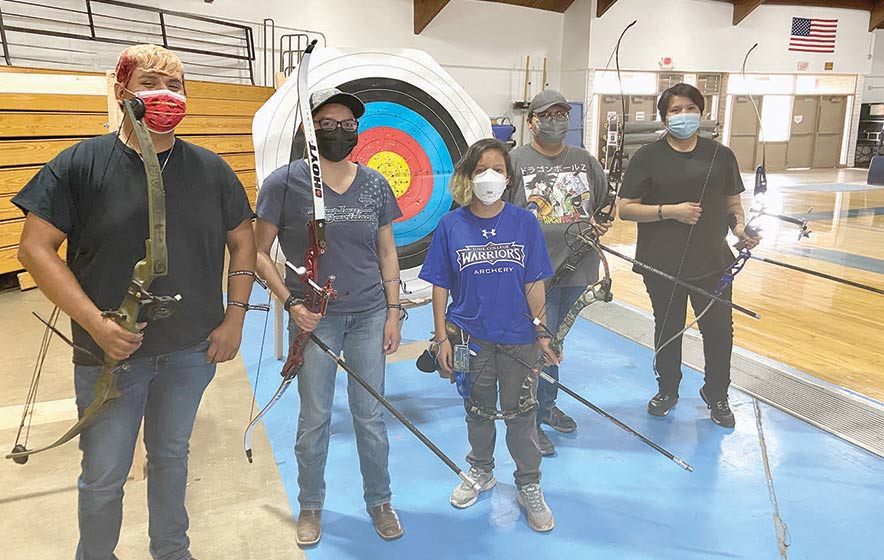
Courtesy photo
The Diné College archery team, shown in the Piñon Pit at the Tsaile campus, includes, left to right, Cedric Joe, Jessica Taylor, Barb Quintana, Taylor Yazzie, and Chantel Perry.
Reports indicate that the archery market will continue to grow over the next five years. Despite the current COVID-19 pandemic, many archery communities are finding ways to remain active in the sport.
Families at home have transformed their backyards into archery ranges. A local archery program in your community would be a great response to remedy boredom.
The sport of archery can provide many benefits for Navajo and Native American families.
If you are willing to learn about archery, you could become a USA Archery certified coach and help guide, educate, and train the next generation of archers.
A Cambridge study found that students involved in extracurricular activities have more favorable perceptions of social-emotional security and suggest that these activities provide a safe environment for adolescent growth while preventing bad habits like smoking and drinking.
Several archery programs, archery organizations, and archery certifications represent numerous archery divisions, styles, and age categories. USA Archery provides instructions to establish and develop a Junior Olympic Archery Development program.
Fortunately, the Twin Warriors Archery Club was recently established in the Navajo Nation and is the first official JOAD program on a tribal reservation.
Twin Warriors could become a feeder program for the Diné College Archery in the future.
Information: Christine M. Ami, cmami@dinecollege.edu, or Gregory Redhouse, gredhouse@dinecollege.edu

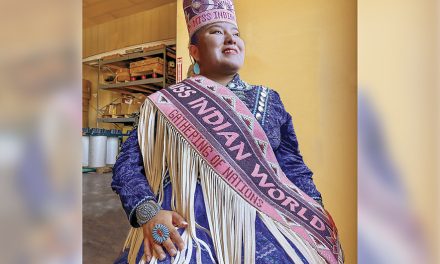
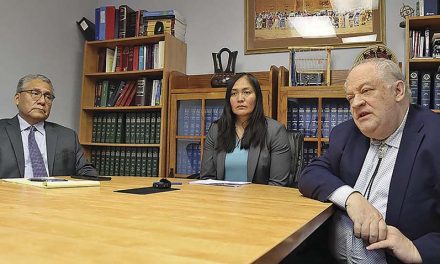
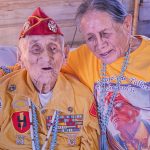
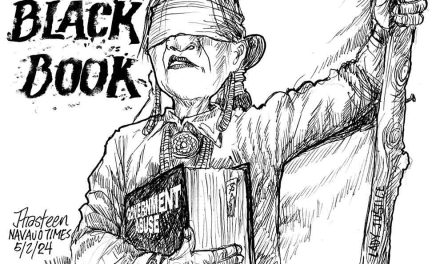



 Highway 264,
Highway 264, I-40, WB @ Winslow
I-40, WB @ Winslow